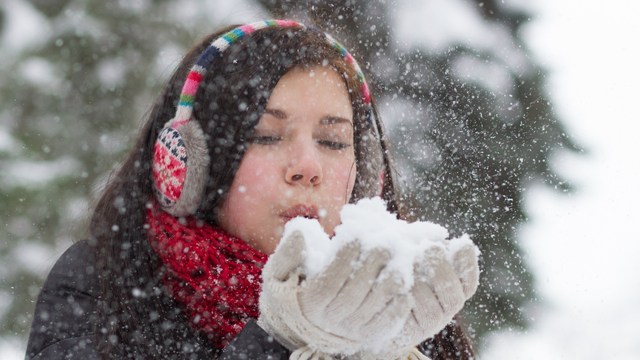 Gennadiy Kravchenko/PhotoSpin
Gennadiy Kravchenko/PhotoSpin
Some winters are so mild they seem to gently flow from fall right into spring. Hats and gloves are more about a fashion statement than a cold weather necessity. Snow never seems to accumulate and sleds gather dust in the garage.
And then there are winters like this one.
The winter of 2013-2014 has so far proven to be one that's been bringing extreme cold throughout the country, as well as lots of snow and ice and loads of winter complications. Chicago battled snow falls for 35 out of 50 days this season.
If snow continues to fall like it has been, meteorologists predict 2014 to be one of the heaviest snowfall totals in the history of the region.
Since no one can change Mother Nature, the key is just to learn to live with it and get through it the best one can. Check out three tips for surviving the worst that winter can throw out there:
Tip 1) Dress in layers.
It is important to dress correctly for the weather. In some places, the difference between the high and low of the day is extreme. Dress for the coldest weather and then remove a layer if the weather warms up a bit.
The layer closest to one's skin should be wool or synthetic fibers and not cotton, as it does not provide moisture management. The next layer should be a fleece or sweater -- and not cotton -- and finally, a lined and insulated coat should top it off.
Tip 2) Don't overdo it.
Straining while shoveling snow or even walking on ice and snow can cause heart attacks. Using a smaller shovel to reduce strain, or a snow blower, taking frequent breaks and not eating a big meal before shoveling can help reduce risk of a heart attack, according to the American Heart Association.
Tip 3) Be aware of the signs of frostbite.
Frostbite can happen within minutes, especially when the temperature and wind chill are as low as they have been. First, the skin starts to feel prickly or becomes itchy. Secondly, the skin will turn red, white, pale or grayish-yellow and it will start looking hard or waxy. If the skin continues to be exposed to the bitter cold, numbness and blisters ensue.
Sources:
USAToday.com. web. 6 January 2014. "Tips to stay safe in cold weather".
http://www.usatoday.com/story/news/nation-now/2014/01/06/tips-stay-safe-cold-weather/4336247
Csmonitor.com. Web. 27 January 2014. "Polar vortex: Frigid Arctic air again grips Midwest, nears record cold".
http://www.csmonitor.com/USA/2014/0127/Polar-vortex-Frigid-Arctic-air-again-grips-Midwest-nears-record-cold-video
Heart.org. Web. 30 January 2014. "Shoveling Snow Health Hazards".
http://www.heart.org/HEARTORG/Affiliate/Shoveling-Snow-Health-Hazards_UCM_426562_Article.jsp
Reviewed January 30, 2014
by Michele Blacksberg RN
Edited by Jody Smith






Add a CommentComments
There are no comments yet. Be the first one and get the conversation started!